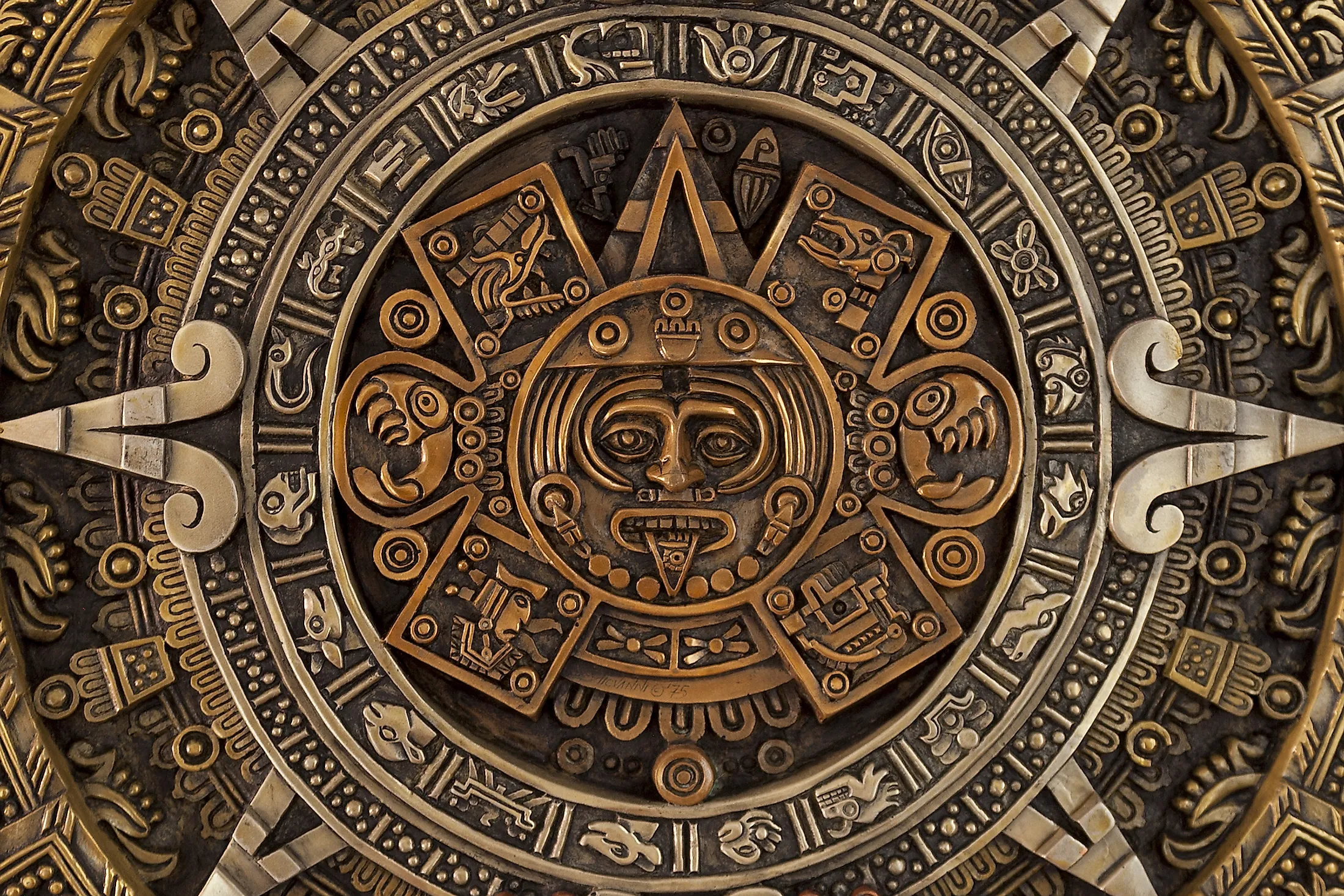
Aztec Empire
The Aztec Empire was one of the great pre-Columbian civilizations in the Americas. It began in the early 13th century, when a group of semi-nomadic people migrated from present-day northern Mexico to the center of Mesoamerica, where they established a new home. These were the ancestors of the Aztec. In the space of less than three centuries, the Aztec people would build an empire and civilization that rivalled those in Europe, including a capital city that was bigger than many European cities. But like many pre-Columbian civilizations in the Americas, the Aztec Empire fell after the arrival of Europeans, who destroyed the great civilization and many of its people so that they could colonize its territory.
Origins Of The Aztec Empire
According to Aztec legend, they came from a place called Aztlán, thought to be somewhere in present-day northern Mexico. In Nahuatl, the native language of the Aztec, the word “Aztec” denotes someone who comes from Aztlán. Other names for the Aztec people include Mexica (pronounced Meshika), Tenochca, and Tlatelolca. The first of these names is where the name “Mexico” originates from.
As the Aztec legend dictates, the ancestors of the Aztec migrated south, guided by their god, Huitzilopochtli. Eventually, these people came upon an island in a lake known as Lake Texcoco. On the island, they saw an eagle seated on a cactus eating a snake. The Aztec ancestors saw this as the fulfillment of a prophecy telling them that this was the place to establish their new home. It was here that the Aztec built what would become the capital of their future empire, Tenochtitlán. The vision of the eagle eating a snake on a cactus is depicted on the flag of present-day Mexico.
Rise Of The Aztec Empire

The Aztecs’ new homeland was under the jurisdiction of a city called Azcapotzalco, to which they had to pay a heavy tribute in order to stay in the area. Initially, the Aztecs hired themselves out a mercenaries, fighting in the conflicts that took place between the different tribes and city-states at the time. Fighting as mercenaries brought the Aztecs prestige, which they used to receive royal marriages. These marriages were important since they made the Aztecs more acceptable in the eyes of the other peoples of the region, who originally viewed them as less civilized. In 1428, Tenochtitlán allied with the city-states of Texcoco and Tacuba to destroy their mutual adversary, the Tepanec. They besieged and conquered the Tepanec capital, the aforementioned city of Azcapotzalco. Eventually, this triple alliance would come to dominate the Valley of Mexico, and would extend its power even further. Tenochtitlán would become the dominant power in the alliance. By the early 16th century, the Aztec ruled up to 500 smaller states, along with five to six million people.
The Aztec Empire At Its Height
The Capital: Tenochtitlán
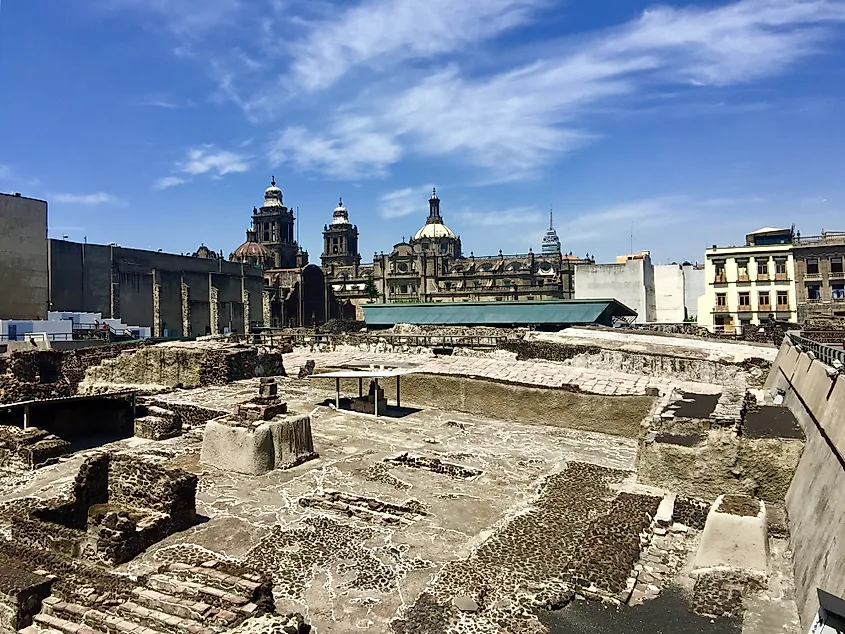
The Aztec capital, Tenochtitlán, was home to up to 140,000 people, making it bigger than most European cities at the time. It was also the most densely-populated city in Mesoamerica. The city was divided into four zones, each of which consisted of twenty districts. Each of these districts had a specialty in arts and crafts. Each of them also had a marketplace, though the main marketplace was in Tlatelolco, which was once an independent city-state, but was conquered by the Aztec and made into a suburb of Tenochtitlán. According to Spanish accounts, this marketplace was bigger than the Spanish city of Seville and had about 60,000 people trading there daily. The aforementioned districts were divided by channels that were used for transportation. There were wooden bridges used to cross these channels, which were put up during the day and taken away at night. Small boats collecting garbage and excrement would use these channels. Aqueducts brought fresh water into Tenochtitlán, which was mainly used for cleaning and washing. Thus, it was probably used by the one thousand people in the city who were dedicated solely to cleaning the city streets.
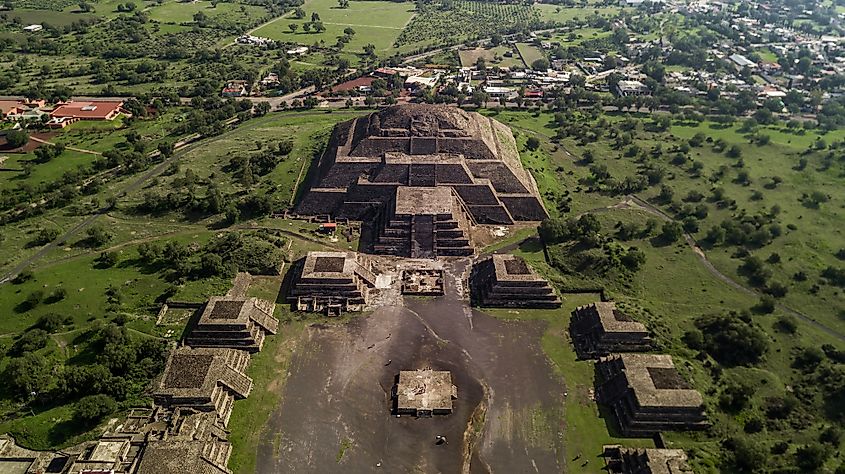
The grandest part of Tenochtitlán was the city center, where the public buildings, temples, and schools were located. These included the main temple, or Templo Mayor, as the Spaniards called it. It was reportedly 27 meters high and consisted of two stepped pyramids, side by side. Other temples included the temple of Quetzalcoatl, and the temple of the sun. There was also the palace of Montezuma, in which there were a hundred rooms, each with its own bath. The palace also contained two houses that served as zoos for various animals, plus a botanical garden and an aquarium.
Aztec Society, Culture, And Religion
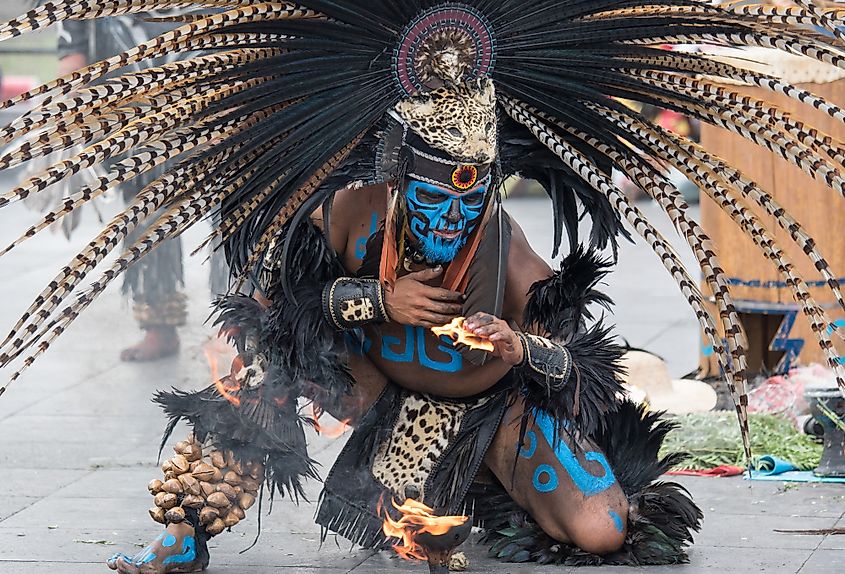
Aztec society was very class-based. There were traditionally two classes in Aztec society: Commoners and nobility. It was possible to achieve the status of nobility by demonstrating prowess as a warrior. As the empire grew, the abundance of tributes it exacted from conquered lands and peoples spurred the creation of a new class of traders. Slavery was also part of the Aztec societal structure, though the institution of slavery in Aztec society was significantly different from slavery in Europe. Aztec slaves had certain rights. In fact, they could even own other slaves. Another important aspect of Aztec society was human sacrifice, done mainly for religious purposes. Aztec religion was polytheist. They worshipped several gods including Huitzilopochtli, the god of war and the sun, Quetzalcoatl (“Feathered Serpent”), and Tlaloc, the rain god. The previously-mentioned Templo Mayor was dedicated to these three gods.
Fall Of The Aztec Empire
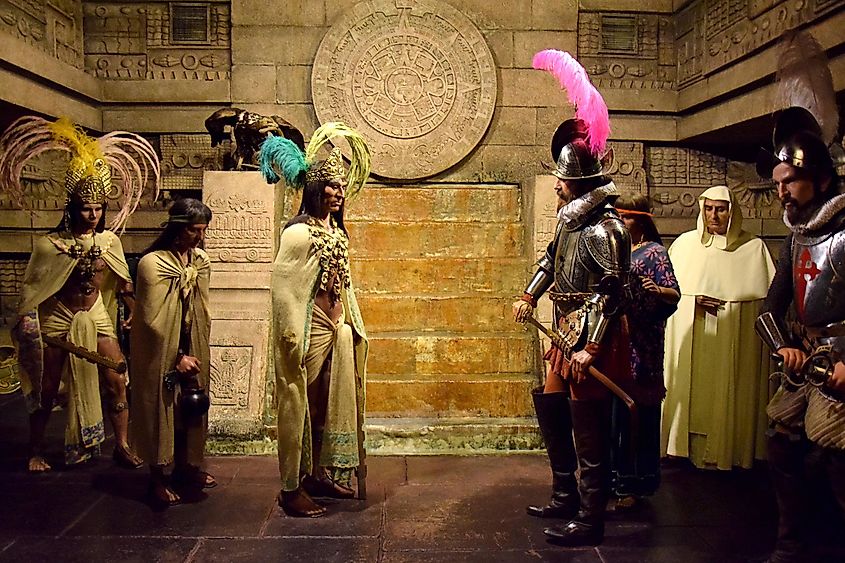
Unlike many other empires, the fall of the Aztec Empire happened rather quickly. The catalyst for the empire’s collapse was the arrival of the Spaniards in Mesoamerica. The first Spaniards arrived in 1517, with three ships and a force of about 100 men. Two years later, a larger force commanded by Hernán Cortez arrived in the town of Tabasco. It was here where Cortez learned about the great Aztec civilization. Cortez built a new city, Veracruz, on the southeastern Mexican coast, where he trained his men to become a skilled fighting force. As Cortez and his men marched into Mexico, they allied themselves with other native peoples, such as the Tlascalans, who were then at war with the Aztecs.
In November 1519, Cortez and his men arrived in Tenochtitlán, where they were welcomed as honored guests by then emperor Montezuma II and his people. But instead of establishing cordial relations with the Aztec, the Spaniards repaid them for their hospitality by taking Montezuma II hostage and taking over the city. Later, the Spaniards slaughtered thousands of Aztec during a ritual dance ceremony. Montezuma II himself died under unknown circumstances while in Spanish custody. Many of the Aztec would also be killed by European diseases brought by the Spaniards, for which they had no immunity.
The Aztec did, for a brief amount of time, expel the Spaniards from Tenochtitlán, but they returned with their native allies to conquer the city. About 240,000 people are believed to have died during the city’s conquest. On August 13, 1521, all Aztec resistance was crushed. The Aztec Empire had fallen. Its territory would become part of the Spanish colony of New Spain. Even the Aztec capital, Tenochtitlán, was not spared. Cortez razed the city and built a new European city, Mexico City, atop its ruins.











